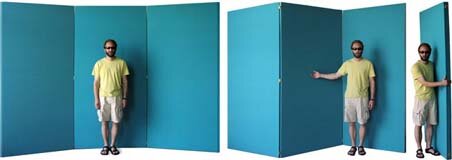Free Vector Art for Professional Graphic Designers
Today, readable content needs an image or graphic representation. This helps the readers to understand and interpret the conveyed message in a much better way. A graphical depiction of a thought makes it more intelligible and easy to present the initial thought. Plain textual content becomes monotonous and boring. So, images can be used to make it interesting and attractive.
Whenever, we are almost done with some content or looking for a particular design, we tend to quickly browse through Google to search for an appropriate image. Sometimes, we get an image within the first few links, while at times, we have to browse a lot. Sometimes, we get the required image, but either it is watermarked or lower resolution or size or blocked. So, rather than stressing yourself with constant searches or confusing pages, you would prefer a repository, where you can find apt vector images of good quality for a theme and of course, at free of cost, which can be downloaded and used without any restriction.
Vector artwork is created by vector illustration programs like Adobe Illustrator, Corel Draw or Inkscape. These are different from normal computer art. They use mathematical equations and geometric components like points, lines or shapes to create images. They are clean, camera ready and can be zoomed or scaled to any extent, without loss of quality. Usually, these images are saved with .ai, .pdf, .eps, and .svg file extensions. These are mostly used by professional graphic designers for printing and producing high quality artwork.
The following portals are some of the awesome places, from where you can download free vector art:
Freepik: This is one of the largest search engines for free vector art. They produce hundreds of free vectors daily with a current stock of over one million artworks in ai, eps and svg formats.
FlatIcon: They have around 107, 150 free vector icon in a wide range of formats like png, svg, eps, psg and base 64.
1001 Free Downloads: They have thousands of free vectors along with photos, PSDs, fonts, brushes and much more. They collect the best free graphics for designers from the web as well as develop in-house to enrich their repository.
FreeVectors: This is like a free community, where anybody can share free vector artwork. They are mostly free for personal and commercial use (sometimes, they may be restricted for commercial use). The freshly added graphics appear on the top of the page and so on. This helps to create a huge repository from the professionals, who use and work with vectors every day.
Vector Portal: This is an extensive library of free vectors, which are up for both personal and commercial use. The site is easy to navigate and filter the options as per your criteria.
DaFont: Dingbat Fonts is mostly a collection of small vector graphics. You can directly type a letter and create a new object in Illustrator CS6. Mostly, they are free for commercial use, but still you need to check before use.
Spoongraphics: This is a personal blog by Chris Spooner, but has a huge collection of original and amazing free vectors. Apart from the artwork, it also has a nice repository of insightful articles on related topics.
There are many other websites, where you can find amazing vector art, free of cost. They all have a huge collection of vector art and adding more to their stock everyday. You can search these locations for almost anything that you have in mind. Now, you know, where to look for those images, without wasting your time and energy, looking at the wrong places.
Hey, thanks for the info. Now what?
If you need any help with content creation, we have tons of free resources to get you over the hump. Please subscribe to this blog to ensure that you never miss an article.
Have questions or comments? Please use the comment form down below. We read and reply to every comment.
If you really enjoyed this post, please help us to spread the word by clicking one of the social media sharing buttons.

